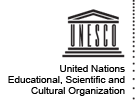Difference between revisions of "Main Page"
Jump to navigation
Jump to search
Twitter
(→News) |
(→News) |
||
| Line 48: | Line 48: | ||
== News == | == News == | ||
| + | * June 24: [http://archivists.ca/content/annual-conference ACA][http://archivists.ca/content/workshops-institutes Digital preservation and holdings management using Archivematica and AtoM] (Victoria) | ||
| + | * June 11: [http://or2014.helsinki.fi/ Open Repositories 2014] [https://www.conftool.com/or2014/index.php?page=browseSessions&form_session=56 Building Successful, Open Repository Software Ecosystems: Technology and Community] (Helsinki) | ||
* June 6: [http://www.library.yorku.ca/cms/iassist/ IASSIST] [http://www.library.yorku.ca/cms/iassist/program/sb7/ An Archival Model to Organize your Datasets for Preservation] (Toronto) | * June 6: [http://www.library.yorku.ca/cms/iassist/ IASSIST] [http://www.library.yorku.ca/cms/iassist/program/sb7/ An Archival Model to Organize your Datasets for Preservation] (Toronto) | ||
* May 30-31: [http://www.bitcurator.net/ BitCurator] Professional Experts Panel meeting (College Park, MD) | * May 30-31: [http://www.bitcurator.net/ BitCurator] Professional Experts Panel meeting (College Park, MD) | ||
Revision as of 15:52, 29 April 2014
Demo and Download
- Demo - user name: demo@example.com, password: demodemo
- Release notes
- Installation
- Installation & training services
Community support
News
- June 24: ACADigital preservation and holdings management using Archivematica and AtoM (Victoria)
- June 11: Open Repositories 2014 Building Successful, Open Repository Software Ecosystems: Technology and Community (Helsinki)
- June 6: IASSIST An Archival Model to Organize your Datasets for Preservation (Toronto)
- May 30-31: BitCurator Professional Experts Panel meeting (College Park, MD)
- May 2: Intro to Archivematica, BC Code4Lib with Mark Jordan, Head of Library Systems at Simon Fraser University (Vancouver)
- April 10: Personal Digital Archiving 2014 poster and demonstrations (Indianapolis)
- April 9: Technology Bytes: Tools and Services for Digital Preservation in Bite-Sized Chunks demonstration and Q&A (online registration open)
- April 1 & 2: Council of State Archivists State Electronic Records Initiative (CoSA/SERI) Electronic Records Training Institute Demonstration and workflow management discussion (Richmond)
- February 25: International Digital Curation Conference (IDCC) 2014 Archivematica demonstration (San Francisco)
- February 12: Archives and Record Council Wales (ARCW) and National Library of Wales (NLW) Archivematica Go-Live Event (Aberystwyth, United Kingdom)
More news...










